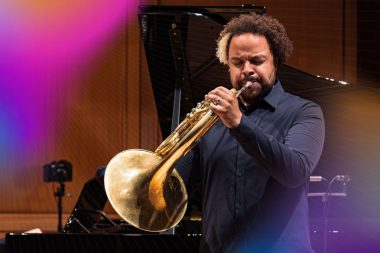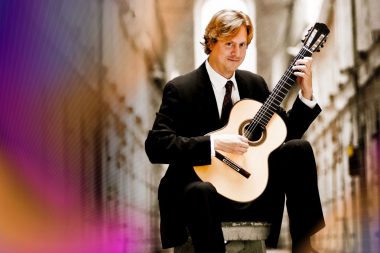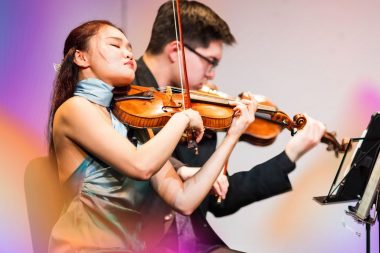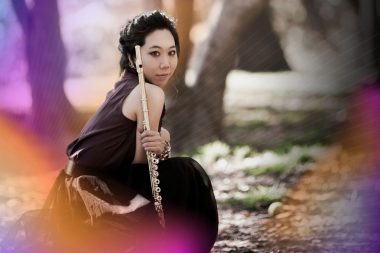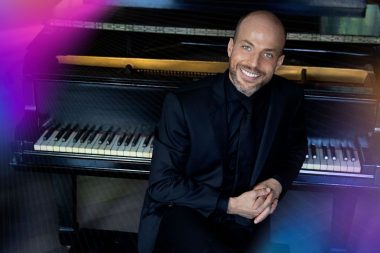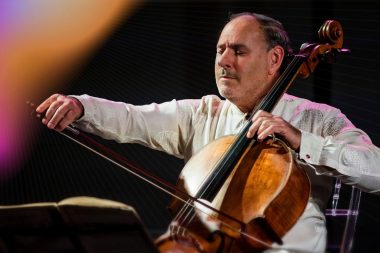Borodin: String Trio in G major (Unfinished)
Alexander Borodin (1833-1887), born out of an affair between a Russian prince and an indentured serf, was raised in his father’s privileged household even though he was denied the family name. His boyhood interest in music gave way to a teenage obsession with chemistry, a pursuit he leveraged into research positions around Europe and ultimately an influential career in science.
While studying at St. Petersburg’s Medical-Surgical Academy from 17 to 23, Borodin unwound by playing chamber music with a circle of friends. Sometime during that period in the early 1850s, he wrote two movements of this Trio in G Major for two violins and cello, but he never went back to add the expected finale. Borodin turned out to be a natural with chamber music, with a knack for stretching out long, attractive phrases and weaving clear textures of layered voices. The Allegro and Andante movements that comprise this trio turned out to be precursors to the two string quartets that Borodin wrote in his prime—the best examples of that genre from within the band of composers dubbed “The Russian Five.”
Leclair: Violin Sonata in E minor, Op. 3, No. 5
Drawing on his background as a dancer and composer of ballet music, Jean-Marie Leclair (1697-1764) fashioned himself into the first French violinist-composer to rival the dominant Italians of the era. He crystallized his supple approach to technique and form in four books of violin sonatas published between 1723 and 1743, with aspects of Corelli’s seminal Italian sonatas melded into the French dance suite as perfected by Lully.
Leclair’ Opus 3 was a set of six sonatas scored skillfully for two violins as equal partners, including this Sonata in E Minor (Op. 3, No. 5). True to the French fashion, the latter movements adapt the rhythmic patterns of popular court dances: the heavy-stepping gavotte in the middle movement, and the barreling gigue (equivalent to a British jig) for the finale.
Jessie Montgomery: Duo for Violin and Cello
Jessie Montgomery (b. 1981) began classical violin lessons at age four, but she learned just as much from the days she spent at her father’s rehearsal studio for rock and jazz bands in Manhattan’s East Village. Since studying violin performance at The Juilliard School and film scoring at New York University, she established herself as an essential composer, performer and educator within New York’s dynamic music scene. Commissions from the New York Philharmonic and National Symphony Orchestra (among many, many others) confirm that Montgomery has earned a lasting place in the highest echelon of living composers.
The Duo for Violin and Cello from 2015 “was written for my friend and cellist Adrienne Taylor,” says Montgomery. “The piece is meant as an ode to friendship with movements characterizing laughter, compassion, adventure, and sometimes silliness.”
Dohnányi: Serenade in C Major
Ernö Dohnányi (1877-1960), along with his slightly younger compatriots Bartók and Kodály, revolutionized Hungarian music in the twentieth century. Of those three composers, Dohnányi was the most committed to the Classical traditions in the German-Austrian lineage of Mozart, Beethoven and Brahms. In that same spirit, he tended to use the German version of his name, Ernst von Dohnányi.
Composed in 1902, the Serenade in C Major exemplifies Dohnányi’s marriage of Classical sensibility with late-Romantic harmonies and textures. For composers of Mozart’s era, the Serenade was a type of music written as entertainment for evening gatherings, often performed outdoors. Sometimes the musicians would take their places while playing an introductory march, and Dohnányi echoed this tradition in his festive first movement. His instrumentation also has Classical roots, mirroring Mozart’s many divertimentos (another form of party music) for the same trio of violin, viola and cello. While the structure is grounded in the past, the musical language of the Serenade is fresh and lyrical, especially in the passionate Romanza.



